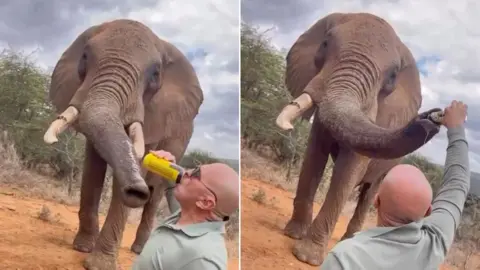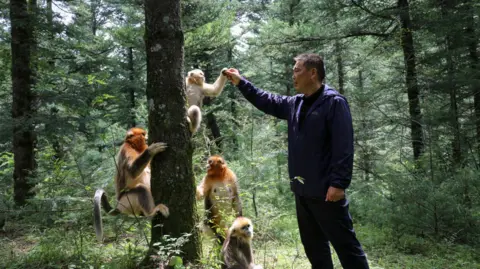In a groundbreaking study published in the journal Science, researchers have highlighted a surprisingly effective method for reducing rhino poaching in Southern Africa: dehorning. The study shows that when wildlife managers removed rhino horns, poaching rates plummeted by 78% in the examined reserves, offering a stark contrast to the less successful outcomes from traditional law enforcement methods.
For years, anti-poaching initiatives have relied heavily on militarized ranger patrols, advanced surveillance, and strict law enforcement, all of which have drained resources without achieving proportional success in deterring poachers. Timothy Kuiper, a statistician and nature conservation expert from Nelson Mandela University in South Africa, states, “Our study suggests that we need to rethink whether aggressive law enforcement is sustainable and effective in protecting rhinos.”
While the dehorning process—executed by sedating the rhinos and carefully cutting off the horn's top—has faced criticism surrounding its ethics and effectiveness, experts assert that the new findings present compelling evidence in favor of the practice. Vanessa Duthé, a Harvard postdoctoral researcher specializing in rhinos, commented, “This study shows that the benefits of dehorning largely outweigh the costs.”
Dehorning has gained traction in the region over the past decade amid a rise in poaching. The procedure is relatively painless and, similar to fingernails, the horns regrow, typically taking around 18 months. With rhino horns continuing to hold high value in markets like China and Vietnam, this novel approach may be vital in ensuring the survival of these majestic creatures while seeking to curb the dire impacts of poaching.
For years, anti-poaching initiatives have relied heavily on militarized ranger patrols, advanced surveillance, and strict law enforcement, all of which have drained resources without achieving proportional success in deterring poachers. Timothy Kuiper, a statistician and nature conservation expert from Nelson Mandela University in South Africa, states, “Our study suggests that we need to rethink whether aggressive law enforcement is sustainable and effective in protecting rhinos.”
While the dehorning process—executed by sedating the rhinos and carefully cutting off the horn's top—has faced criticism surrounding its ethics and effectiveness, experts assert that the new findings present compelling evidence in favor of the practice. Vanessa Duthé, a Harvard postdoctoral researcher specializing in rhinos, commented, “This study shows that the benefits of dehorning largely outweigh the costs.”
Dehorning has gained traction in the region over the past decade amid a rise in poaching. The procedure is relatively painless and, similar to fingernails, the horns regrow, typically taking around 18 months. With rhino horns continuing to hold high value in markets like China and Vietnam, this novel approach may be vital in ensuring the survival of these majestic creatures while seeking to curb the dire impacts of poaching.



















